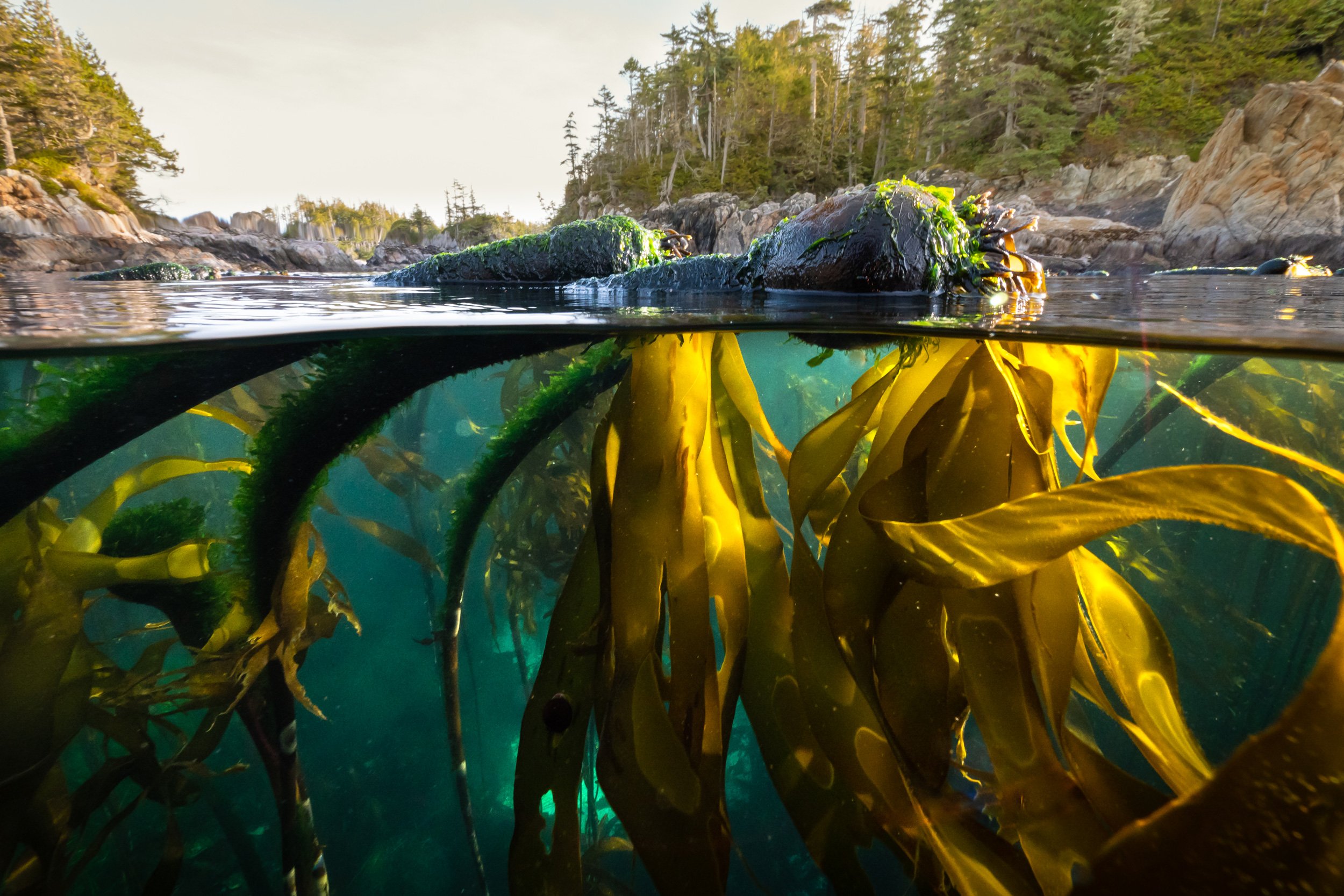
Frequently asked questions.
What is your approach to developing seaforestation projects?
Our approach to developing seaforestation projects involves multiple phases, each with its own version. Version 1 of phase 1 focuses on laying the groundwork for these projects and establishing a solid foundation for future growth. To learn more about this initial phase of our approach, click here.
How do seaforests help combat climate change?
Kelp forests have been found to play a significant role in combating and addressing climate change. Kelp absorbs vast amounts of carbon dioxide in order to grow, making it one of the most productive ecosystems on earth [3]. Recent research has found that kelp forests have an incredibly fast growth rate, up to two feet per day, making them an efficient and powerful tool in reducing the effects of global warming [1]. The carbon that kelp absorbs can be channeled into deep sea carbon stores, making it an essential component in carbon sequestration [5]. Seaweed forests also foster beautiful and diverse ecosystems that provide habitat, food, and oxygen to thousands of species, including sea otters, herring, octopuses, and sea lions [7]. Kelp forests are also being threatened by marine heat waves and other climate change stressors, which makes protecting and restoring kelp forests an important aspect of combating climate change [6]. Overall, kelp forests are an important natural resource in fighting climate change and need to be preserved and protected for future generations [9].
How do kelp forests increase marine biodiversity?
Kelp forests are incredibly important ecosystems that support a wide variety of marine biodiversity. They provide habitat, shelter, and food for a vast array of organisms, ranging from small invertebrates to large fish and marine mammals.
Kelp itself is a type of seaweed that forms dense underwater forests along coastlines in colder waters. These forests create a complex three-dimensional structure, with tall kelp fronds that provide shelter and habitat for a variety of marine species. In addition, kelp also provides a surface for small plants and animals to grow on, which increases the overall biodiversity of the ecosystem.
Kelp forests also help to maintain water quality and support the health of surrounding ecosystems. They absorb excess nutrients and carbon dioxide from the water, which helps to reduce ocean acidification and maintain a healthy pH balance. This in turn supports the growth and survival of other marine organisms, including fish and shellfish, which are important sources of food for humans.
Overall, kelp forests play a crucial role in maintaining the health and biodiversity of marine ecosystems, and protecting them is essential for the long-term health of our oceans.
How do you plant your inter-tidal seaforests?
Seeding kelp forests with green gravel involves a process of collecting fertile kelp plants from the wild and isolating their reproductive tissue or sorus to obtain kelp propagules or zoospores. These spores are then added to small rocks in trays and left to grow for several weeks until small sporophytes appear. The green gravel is then scattered onto the ocean floor, and the baby kelp is left to grow and attach to the underlying substrate [3]. The Green Gravel technique involves seeding small rocks with kelp propagules, rearing them in the lab, and then out-planting them into the field [7]. The technique has shown promise in restoring kelp forests and overcoming some of the current major limitations of kelp restoration [1], particularly in combating kelp forest decline due to climate change [2].
What methodologies and standards are you aligned with?
There are several standards in development for quantifying specific increases in biodiversity, and as well as others for carbon capture and sequestration from seaweeds. The leading organization behind many of these standards is Verra, a trusted provider of sustainability certification and standards. We are aligning our own methods with these standards for best practice for our activations. You can view these standards on their website to learn more about how seaweed play a crucial role in mitigating climate change and preserving our planet's biodiversity.
i) Climate, Community & Biodiversity
ii) Seascape Carbon Initiative

